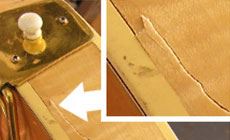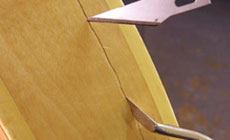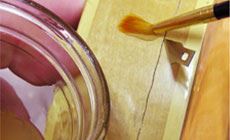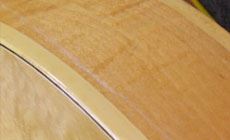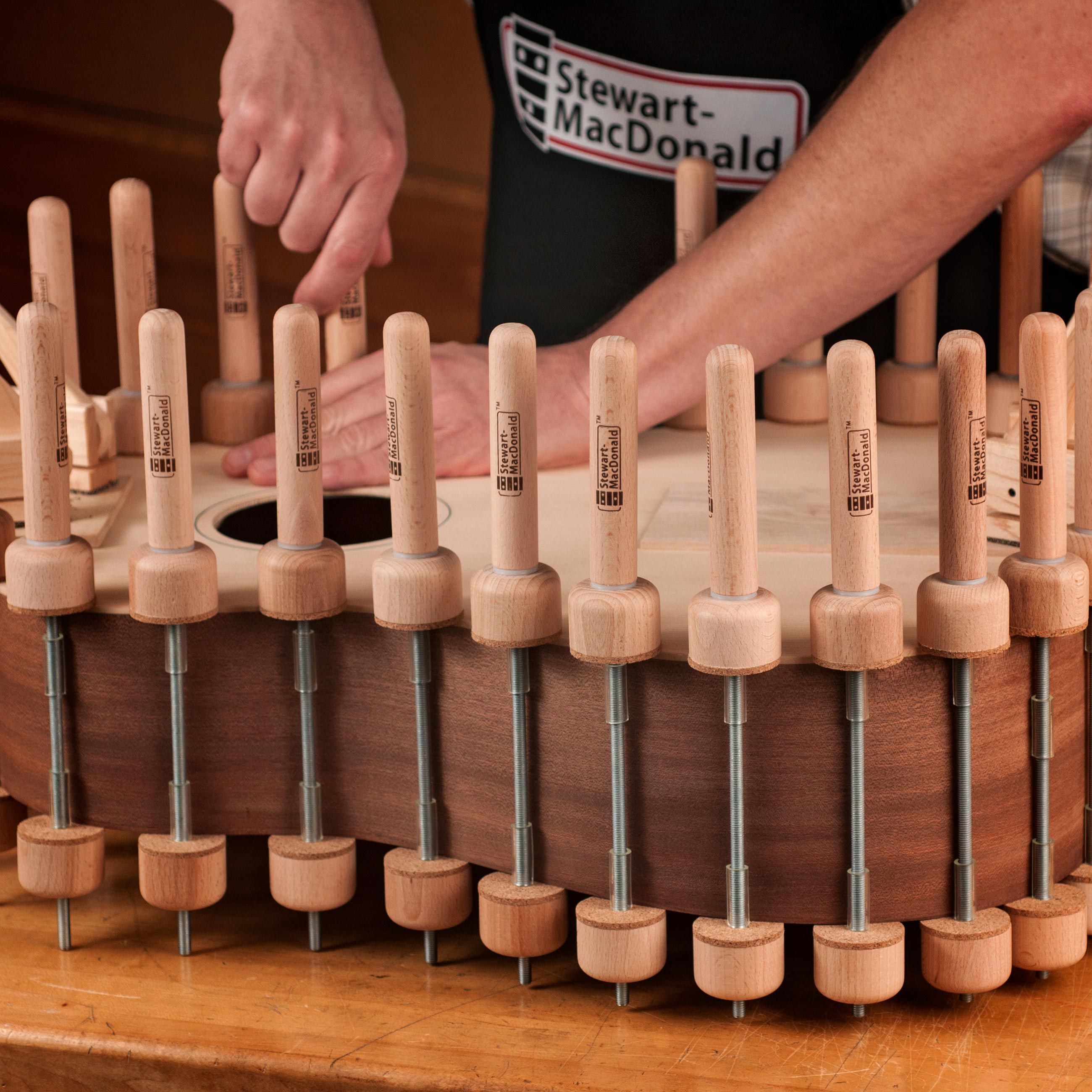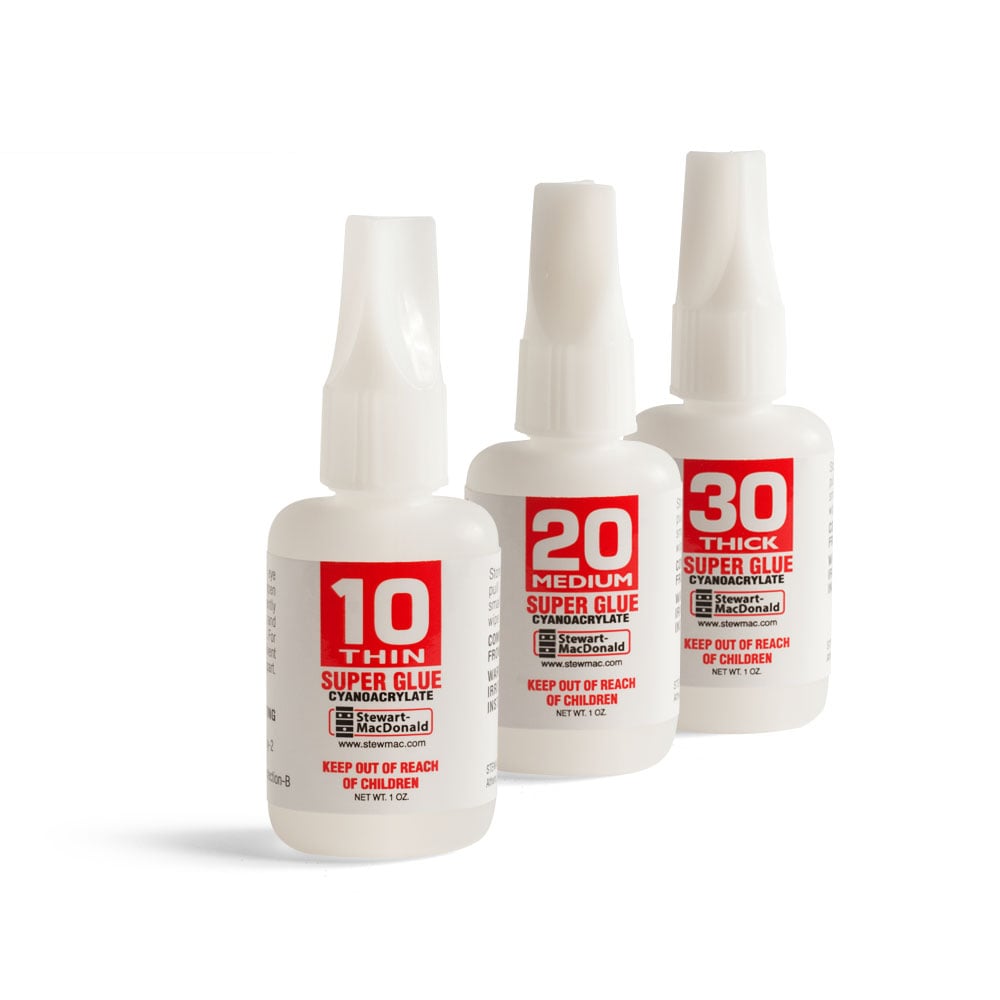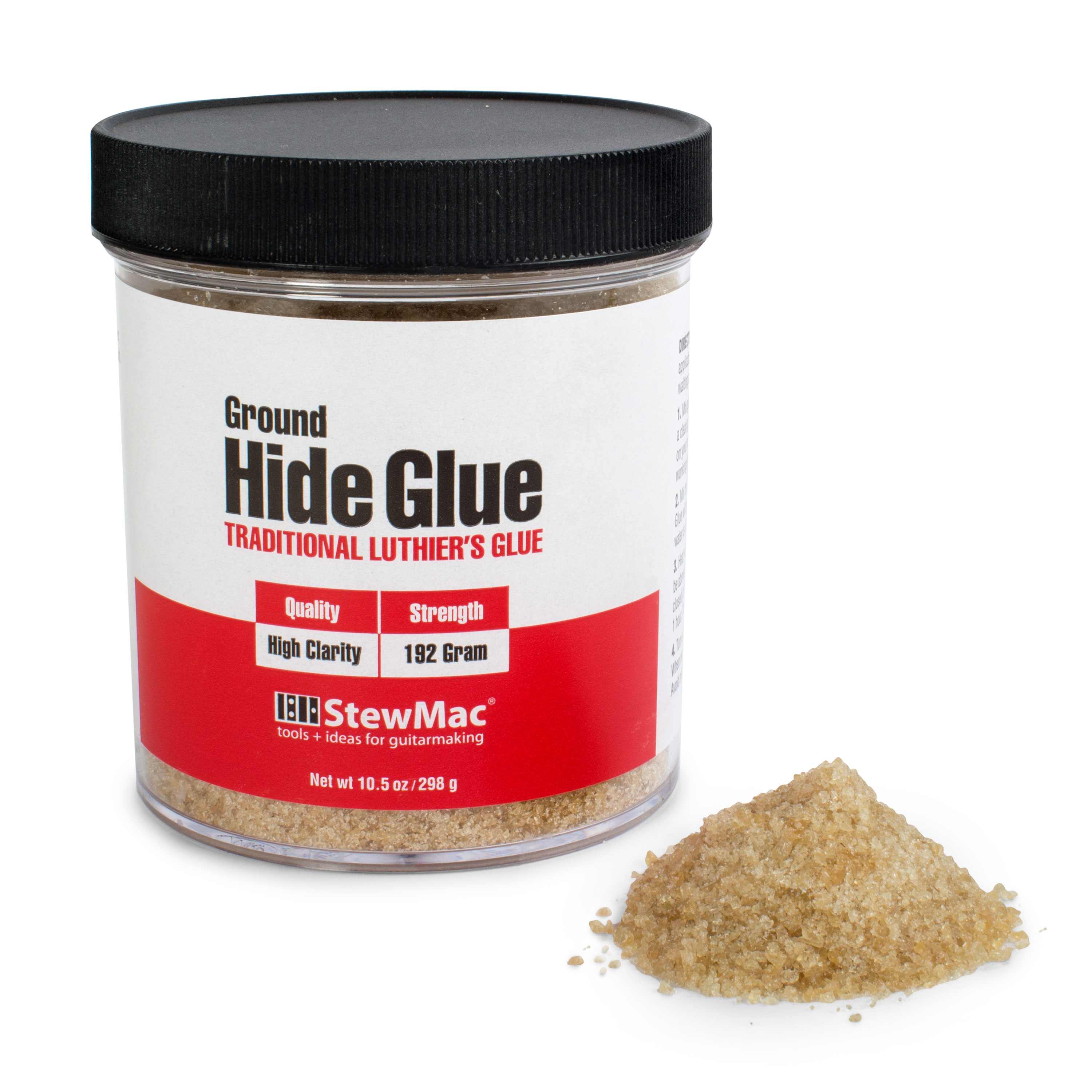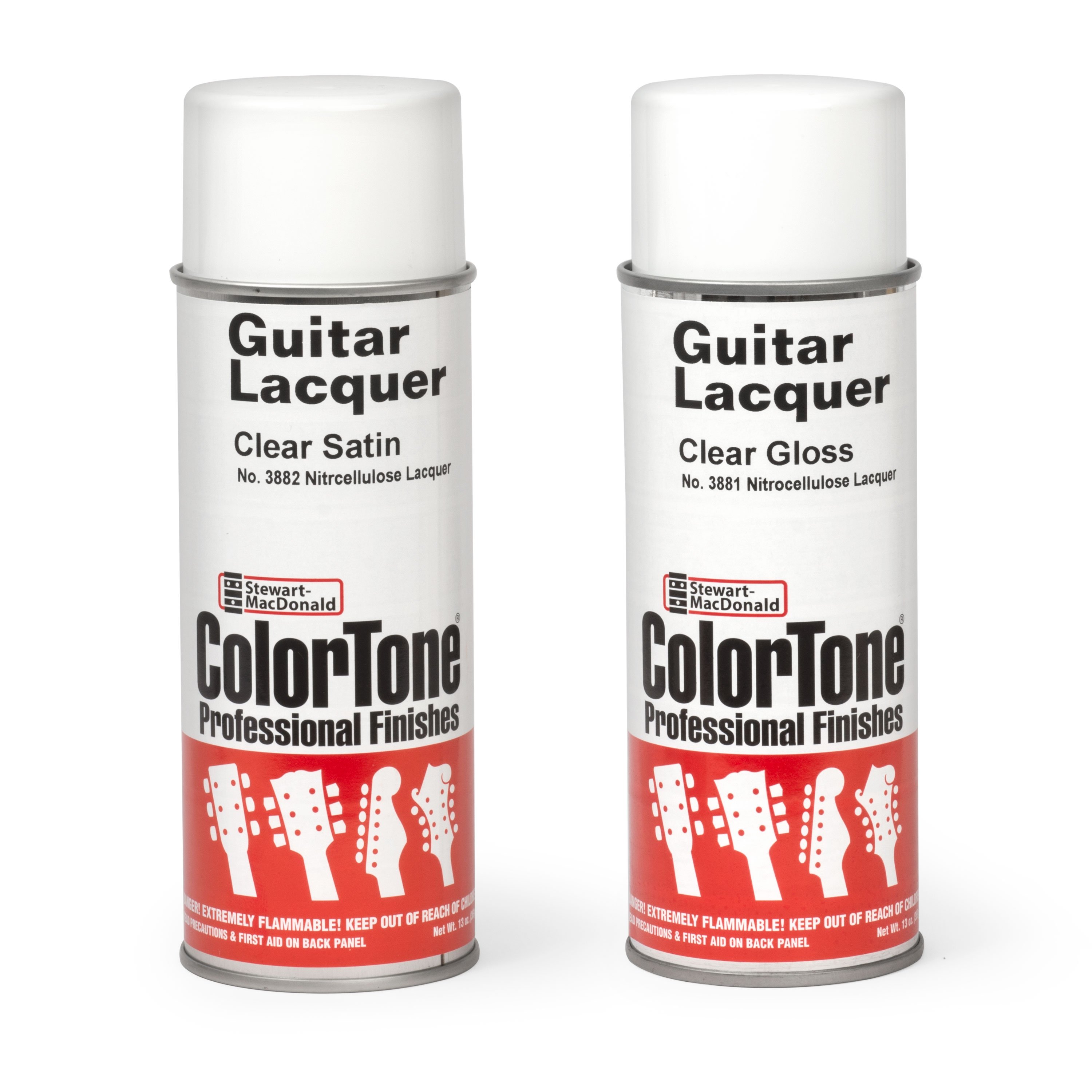Crack repair on a Gibson ES-350T ("Byrdland Lite?")
Yes or No? Gibson’s beautiful hollowbody design from the 1950s. The Byrdland’s lower-priced cousin is pretty nearly as great: the ES-350T (pictured above). A similar ES-350T came into my shop for a crack repair last week, then two hours later someone else emailed pictures of the Byrdland below. He inherited it along with some vintage amps (lucky guy!) and wanted help dating the guitar. To answer his question, I pulled out George Gruhn’s Guide to Vintage Guitars. Based on the serial number of this Byrdland, Gruhn’s book showed me that it’s a 1957. The ES-350T here for a crack repair is a 1958. The Byrdland design was a collaboration between Nashville guitar legends Billy Byrd and Hank Garland – hence the name. They wanted the large body of a Gibson L-5CES, but thinner: 2-1/4" deep rather than 3-3/8". They gave it a narrow neck and a short scale (23-1/2"), and a fingerboard that tapers very little from end to end. The string spacing is narrow, so the pickup polepieces have narrow spacing too. Gibson also introduced the ES-350T in 1955, a plainer and less expensive version. To compare these two models, here are the advertising descriptions from Gibson’s 1955 catalog: The Gibson Byrdland is creating excitment in the guitar field with its thin body and narrow, streamlined neck. Designed by famed guitarists, Billy Byrd and Hank Garland, this unusual Cutway Electric Spanish Guitar incorporates all the features demanded by leading players as well as several important innovators. ebony fingerboard / pearl black inlays / flowerpot peghead inlay / carved spruce top / 7-ply bound tortoise pickguard / triple-loop tailpiece design — Dan The Gibson ES-350T Cutaway Electric Spanish Guitar has a reduced depth of body, a smaller, more streamlined neck and a shorter scale length---all requested features of the leading guitarists. rosewood fingerboard / double parallelogram inlays / crown peghead inlay / laminated maple top / beveled b/w/b/ pickguard / "W" tailpice — Dan The ES-350T had this damaged side, but at least the crack’s edges were clean. My shopmate, Elliot John-Conry, used hot hide glue for this repair. Elliot dry-clamped the crack to test the fit before actually gluing, and luckily it closed up nicely. This was good, because the owner only wanted to pay for a simple glue-up without any kind of finish repair. At each end of the crack, fractured wood lifted away in little flaps. These had to be glued at the same time as the crack itself, adding complication to this job. Elliot glued both of them with #20 medium super glue before gluing the long crack. Elliot warmed the crack area with a desk lamp and test-clamped to make sure everything squeezed together okay, since he’d need to work fast with hot hide glue. He held the crack open with X-Acto knife blades and a cut-down offset disassembly knife... ...while quickly flooding the crack with hide glue. He clamped the crack shut with spool clamps, while pressing the flaps in. I helped by lending a second pair of hands at this point. The pressure of the closing crack and the spool clamps kept the flaps from popping loose. We didn’t have time for any photos at that point. After drying overnight, a rag dampened with hot water cleaned up any excess hide glue. The repair was just what the customer wanted: simple, clean and honest with no lacquer touch-up whatsoever. You could see a few missing flakes of finish. (We’d have preferred to drop-fill the crack with clear lacquer and buff it out.) Once it was back together, of course Elliot fell in love with the ES-350T. I did, too: It’s not a Byrdland, but it’s mighty close.Is this a Gibson Byrdland?
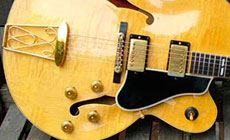
One guitar I’ve always wanted to own is a Byrdland
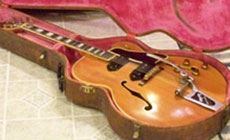
Dating these guitars
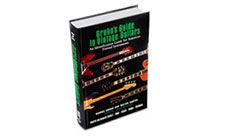
Sensational New Byrdland
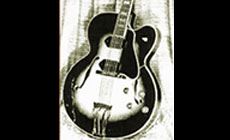
ES-350T—"Artist Approved" For Solo or Nackground Work
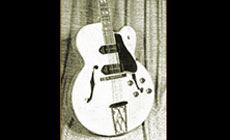
Repairing a nasty crack
